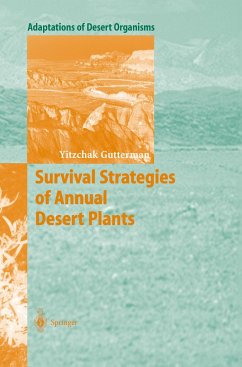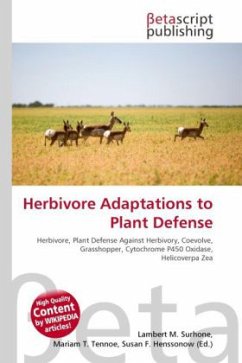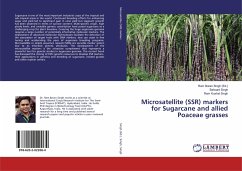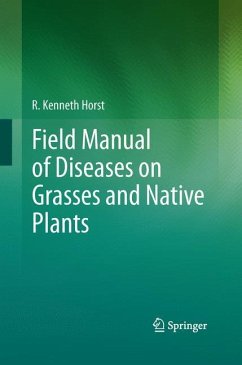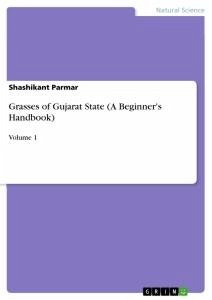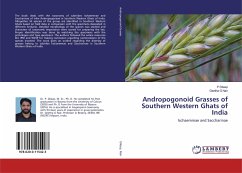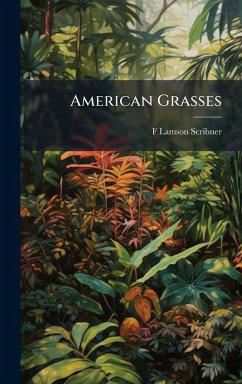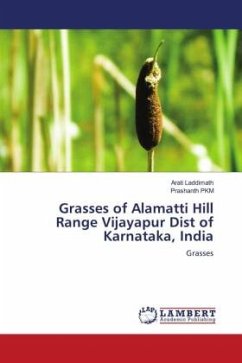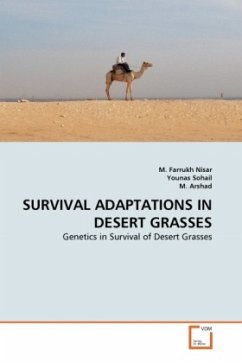
SURVIVAL ADAPTATIONS IN DESERT GRASSES
Genetics in Survival of Desert Grasses
Versandkostenfrei!
Versandfertig in 6-10 Tagen
32,99 €
inkl. MwSt.

PAYBACK Punkte
16 °P sammeln!
Cholistan desert, a stretch of about 26000 km2, being a very unique eco-zone of Pakistan, is enjoys a very special status of its own kind. Its biological resources are confronted with multiple stresses of long droughts, increased salinity, high temperature, a very low rainfalls and enhanced grazing pressure. Therefore, the plant species have developed very typical xeric genetic adaptation to cope with these highly stressed environmental conditions. During the year 2004-05, several expeditions were made to collect the germplasm of the perennial desert grasses like Lasiurus scindicus Henr. and P...
Cholistan desert, a stretch of about 26000 km2, being a very unique eco-zone of Pakistan, is enjoys a very special status of its own kind. Its biological resources are confronted with multiple stresses of long droughts, increased salinity, high temperature, a very low rainfalls and enhanced grazing pressure. Therefore, the plant species have developed very typical xeric genetic adaptation to cope with these highly stressed environmental conditions. During the year 2004-05, several expeditions were made to collect the germplasm of the perennial desert grasses like Lasiurus scindicus Henr. and Panicum antidotale Retz. This book pertains to the exploration and utilization of desert's inherent genetic resources particularly the perennial grasses, as no credible benchmark of this type was already available. These grasses have been proven to be the ice cream species for herbivorous domestic and wild stock/fauna in Cholistan desert. The germplasm of both grasses in these collections show a sufficient diversity which would be very useful for screening the resistance genes to salinity, drought and extremes of temperatures.



